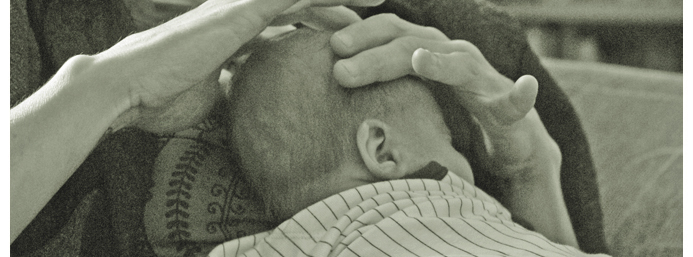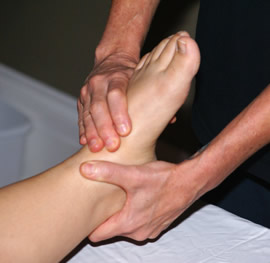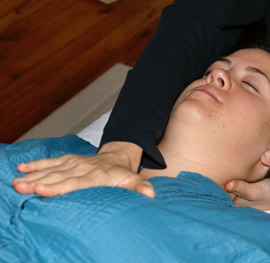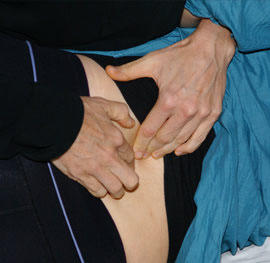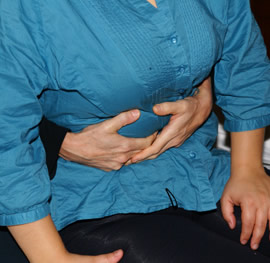Soft Tissue Manipulation
The practitioner uses soft tissue manipulation in many different ways. In general, it is used to evaluate the condition of tissues and to help the body's fluids (such as blood and lymphatic fluid) flow smoothly. Keeping fluids flowing smoothly reduces harmful fluid retention and makes the body's immune system more effective.
Fascia is tissue found in all parts of the body. It connects all of the body's structures at both superficial and deep levels. Practitioners evaluate the fascia to find areas of restriction, and then use soft tissue manipulation to make sure the length and tension of the fascia are properly balanced.
Throughout the treatment, osteopaths keep checking on the state of the body's tissues. If one technique isn't working to correct a restriction, they use another approach instead. Above all, osteopathic manual practitioners try to restore health without over-treating.
Osteopathic Articular Technique
Osteopathic Manual Practitioners use this
technique to:
- reduce muscle spasms near a joint
- ease neurological irritations around a joint
- make joints more mobile
- reduce pain and discomfort
The articular technique involves gently moving 2 joint surfaces. Before doing this, practitioners carefully prepare the soft tissues around the treatment area. They also move the patient into a position that will minimize or eliminate the energy and force needed to perform the manoeuvre. Many patients find this technique less forceful than joint manipulations.
A click is sometimes heard when the correction is made. This is nothing more than the synovial fluid moving through the joint.
The osteopathic articular technique is a very small component of osteopathy. Patients who do not want to have this (or any other) technique performed on them are encouraged to discuss their concerns with their practitioner. Osteopaths can use other methods to achieve similar results.
 |
 |
Cranial Osteopathy
This is the gentlest osteopathic technique and it requires the most experience to use effectively. To learn this technique, manual practitioners undergo years of intensive training. Through this training, their hands become sensitive to the cranial mobility and develop great precision in utilizing cranial technique.
Osteopathic manual practitioners use this gentle technique to assess and treat the mobility of the skull and its contents. They may also use it to assess and treat the spine, the sacrum, and other parts of the body.
The goal of this technique is to adjust the body's physiology by restoring balance to the circulation of the blood and other body fluids. Practitioners do this by treating the body's inherent biorhythm. Practitioners trained in this technique can feel this rhythm in the patient's head, spinal cord, and in the sacrum and the rest of the body. Osteopaths use the biorhythm to assess the patient's condition, and they may modify it during treatment.
Visceral Manipulation
Osteopaths use visceral manipulation to treat
organs and viscera of the body, including:
- lungs
- heart
- liver
- spleen
- kidneys
|
- stomach
- pancreas
- intestines
- bladder
- uterus
|
Patients may feel pain in one or more of these organs or the viscera may be less pliable than it should be. Osteopathic manual practitioners gently move the structures themselves and the fascia (connective tissue) that surrounds them to restore full movement.
Most patients treated with visceral manipulation feel only gentle pressure of the Osteopath's hand. But the corrections are powerful enough to improve the mobility of an organ, improve blood flow, and help the organ function more effectively.
The above (and many other) osteopathic manual techniques and approaches are used in a coordinated and rational fashion to slowly adjust the patients anatomy and physiology towards normal so that the patient’s body can heal itself.
 |


